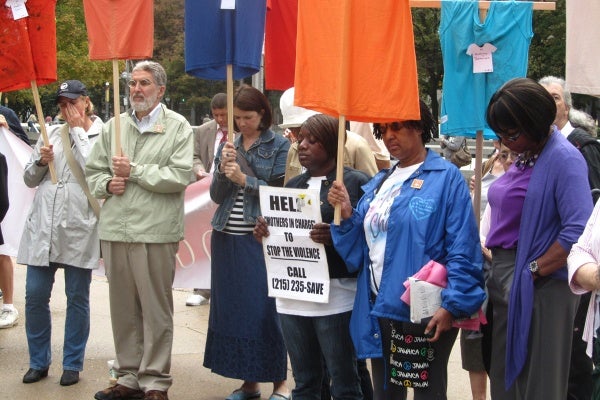Philly foragers see the city in a different light
Urban foragers eat plants that grow in city parks, back yards, and even abandoned lots. The food is free and local, but scavenging for food also makes foragers see the world a little differently.
With a passing train providing a soundtrack, Nance Klehm is on the hunt in North Philly.
“I always have my knife with me,” she said. “As foragers, you should always have a knife with you and you should have some paper bags.”
Klehm sliced off a sprig from a plant growing in an abandoned lot near the Temple University campus.
“This is wild spinach, also known as lamb’s-quarters,” she said. “The leaves are a little bitter now, because it’s late in the season. But in a cream soup, they taste nice.”
Klehm, who calls herself a “radical ecologist,” was in town from Chicago to forage and prepare a meal at Temple’s Tyler School of Art on Thursday. Depending on what is in season, she said, up to half of her daily diet comes from what she finds during urban walks. Those walks have made her see the world around her differently.
Attention to plants
“I don’t notice people’s outfits, and people, and I don’t know architecture,” she said. “I’m mostly noticing plants. I’m not naturally an urban person, and this is probably why I gravitated toward foraging,” to deal with the stress and loneliness of living in a city.
Enough people are gathering wild plants that New York City park rangers have been trained to spot foragers and chase them away.
In Philadelphia, Lynn Landes said her online meet-up group for foragers has 300 members. She leads tours and teaches people which plants are safe to eat.
“I like foraging because it’s interesting, it gives more meaning to your everyday walks,” Landes said.
Her tours are usually in parks, away from car exhaust, but she will eat weeds out of planters near her Center City home too.
“One planter had a huge lamb’s-quarters and some purslane, and I was just nibbling off that,” she said. “You catch looks from some people noticing that you’re eating something and they’re like, ‘You can eat that?’ And I’m like, yes, yes you can eat that.”
It is against the rules to remove plants from Philadelphia’s parks. A spokesman said he has not noticed the same problem as New York—the city’s most delectable flora does not seem to be disappearing. He strongly advised against eating wild plants, noting there is no way to know what is in the soil under that green unless it’s tested.
A foraged feast
Back at Temple, foragers sitting down to their meal fretted a bit about ground contaminants, but figured small doses would not hurt.
At two long tables, they munched on homemade crackers with wild seeds, a salad of local mallow, sorrel and wild onion grass, as well as creamed wild spinach soup.
“It’s amazing, it’s really good,” said Temple student Sam Schild. His favorite? The roasted burdock root.
“It’s almost like a parsnip mixed with a mushroom,” he said. “The texture of a parsnip, flavor of a mushroom.”
It was smothered in a sauce made with purslane, a green Nance Klehm filched from outside a law office in Center City.
WHYY is your source for fact-based, in-depth journalism and information. As a nonprofit organization, we rely on financial support from readers like you. Please give today.















